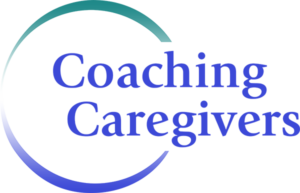The Caregiver Coach
Helpful tips for family caregivers
November/December 2013
This November issue we focus on acknowledgments: acknowledging our veterans and extending them assistance when they are seriously ill. And of course, acknowledging the blessings in our life and giving thanks for the many reasons to be grateful, despite hardship. And then there is the greater wisdom of acknowledging things we might prefer to deny, such as high blood pressure.
- Palliative care for seriously ill veterans
- Cultivating gratitude when the going gets tough
- When blood pressure goes untreated
Palliative care for seriously ill veterans
 Is your family member seriously ill or in frail condition? A veteran? If so, the VA has a special service that offers palliative care to keep your loved one comfortable.
Is your family member seriously ill or in frail condition? A veteran? If so, the VA has a special service that offers palliative care to keep your loved one comfortable.
The cause of your loved one’s ill health is not important in requesting palliative care. The point is to relieve distressing symptoms. For example, you might be concerned about pain, nausea, or shortness of breath. Your relative can receive treatment specifically to keep such discomforts at bay.
Palliative care professionals work in a team, which allows them to treat the whole person. For instance, a social worker can address with emotional issues and a chaplain can address spiritual distress.
With palliative care:
- Providers come to the home. Or to a residential or skilled care facility or hospital.
- Your loved one may continue curative treatments.
- The focus is comfort and quality of life. The team works to make each day the best day it can be.
- Counseling support is also provided for family members, if desired.
Veterans who request palliative care can still receive treatment for curing the disease. For example, suppose your loved one has cancer. They can continue with chemo. The palliative care team would provide assistance for dealing with the pain of the cancer and the nausea from treatment. The team could also help with any emotional or spiritual issues. This support is available for the veteran and for the veteran’s family caregivers.
Palliative care is available to any veteran who is enrolled in the VA for health services. Most of the care is provided free of charge or with a very small copay.
Return to topCultivating gratitude when the going gets tough
Thanksgiving is our annual celebration of gratitude. But if someone dear to you is seriously ill this year, the very last thing you might be feeling is gratitude.
In fact, our national celebration is a response to hard times. We honor the Pilgrims’ giving of thanks for coming through a harrowing year. And today, research shows that it is in tough times that we benefit most from a grateful approach. Gratitude helps us
- keep things in perspective. Reminding us that life naturally includes the unpleasant alongside the pleasant.
- withstand stress. By cultivating awareness of the good in our life, we’re more resilient during misfortune.
- find the positive. Expecting that life holds both good and bad, we know to look for the upside.
Even though you may never feel grateful during times of hardship, you may find it possible to hold grateful thoughts. And that creates the beneficial “attitude of gratitude.” This takes practice. It’s easy to feel good and to think happy thoughts when things seem to be going your way.
Try these exercises for cultivating gratitude during challenging times:
- Take a step back. Sometimes we’re so focused on what’s going wrong that we lose perspective. Recall a difficult time in your past and recognize that you no longer feel that particular distress. Remind yourself that bad times come and bad times go.
- Appreciate your gains. Consider what positive attributes you have discovered about yourself as a result of coping with tough circumstances. Perhaps a capacity for tenderness that was unknown. Maybe you have become more patient. Perhaps you have developed an ability to navigate obstacles.
- Observe your priorities. Reflect on what you now consider important in life. How has hardship helped you sharpen your focus? Perhaps you’ve found motivation to complete old intentions. Or found yourself aware of things once taken for granted.
Return to top
When blood pressure goes untreated
Don’t confuse a lack of symptoms with a lack of risk. A person with high blood pressure usually feels “just fine.” And that makes it easy to also feel unconcerned. Your loved one may not be motivated to treat high blood pressure. Or may want to stop taking medications because they don’t notice any difference.
But uncontrolled high blood pressure takes a toll on the body, increasing the risk of
- heart attack. Blood flowing at high pressure makes tiny tears in the artery walls. The resulting scar tissue narrows and hardens the arteries. A heart attack occurs when plaque or a blood clot cuts off blood flow in the heart.
- heart failure. Narrow arteries force the heart to work harder to pump blood throughout the body. Such overwork leads to an enlarged heart, extreme fatigue, and, ultimately, to heart failure.
- stroke. When an artery in the brain gets too narrow or clogged or bursts because it has been weakened, the result is a stroke. A stroke can lead to loss of muscle control on one side of the body, inability to talk, or even to dementia (problems with memory and reasoning).
- kidney damage. The kidneys put out a hormone that helps the body keep blood pressure under control. In a vicious cycle, when the arteries in the kidneys become damaged, the kidneys are less able to produce this helpful hormone.
- vision loss. High blood pressure puts pressure on the optic nerve. This can lead to dulled and/or double vision.
Keeping an eye on blood pressure is a smart way to safeguard health! Although high blood pressure isn’t curable, it can be managed. Sometimes through changes in lifestyle or with prescribed medication taken as directed.
Return to top


